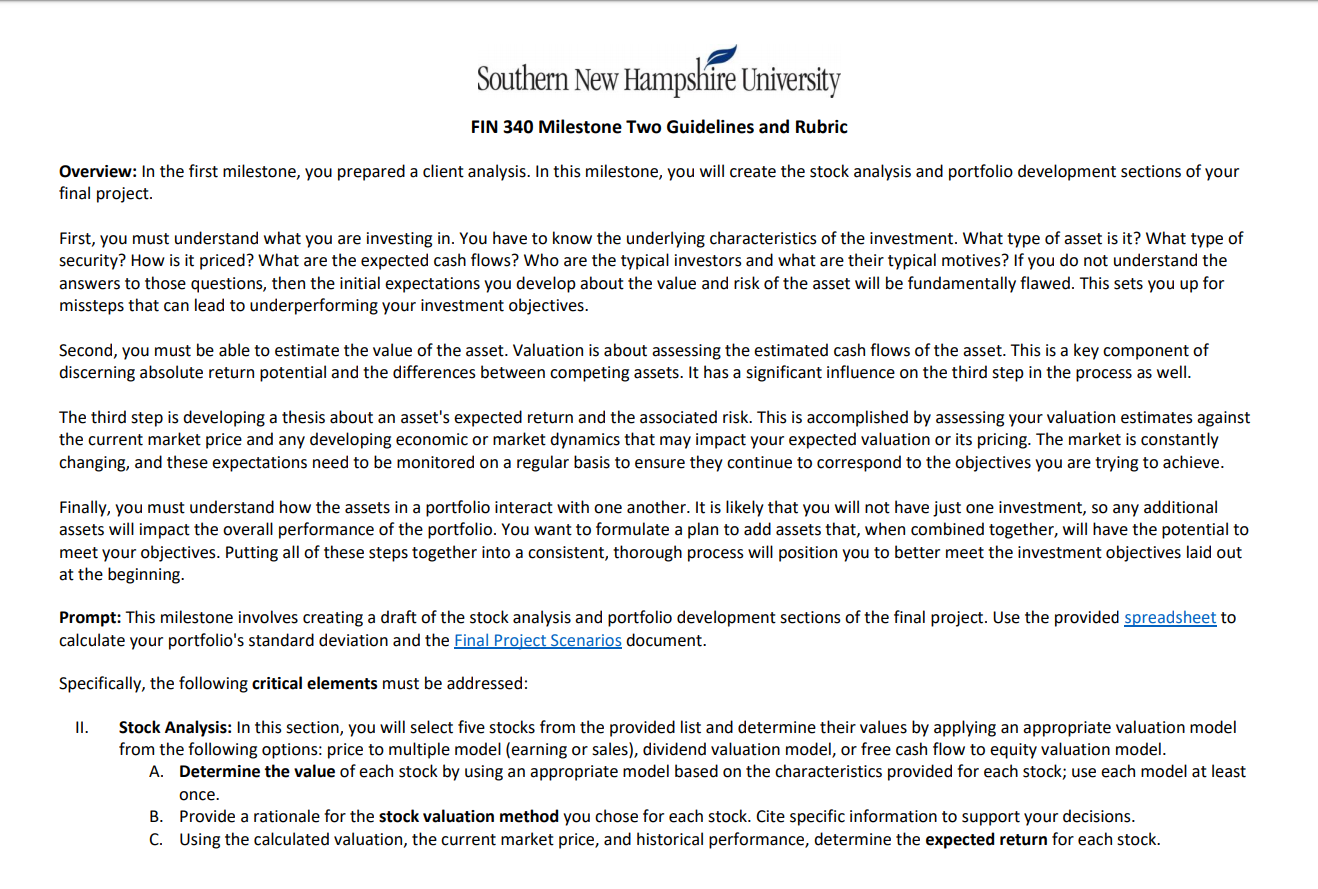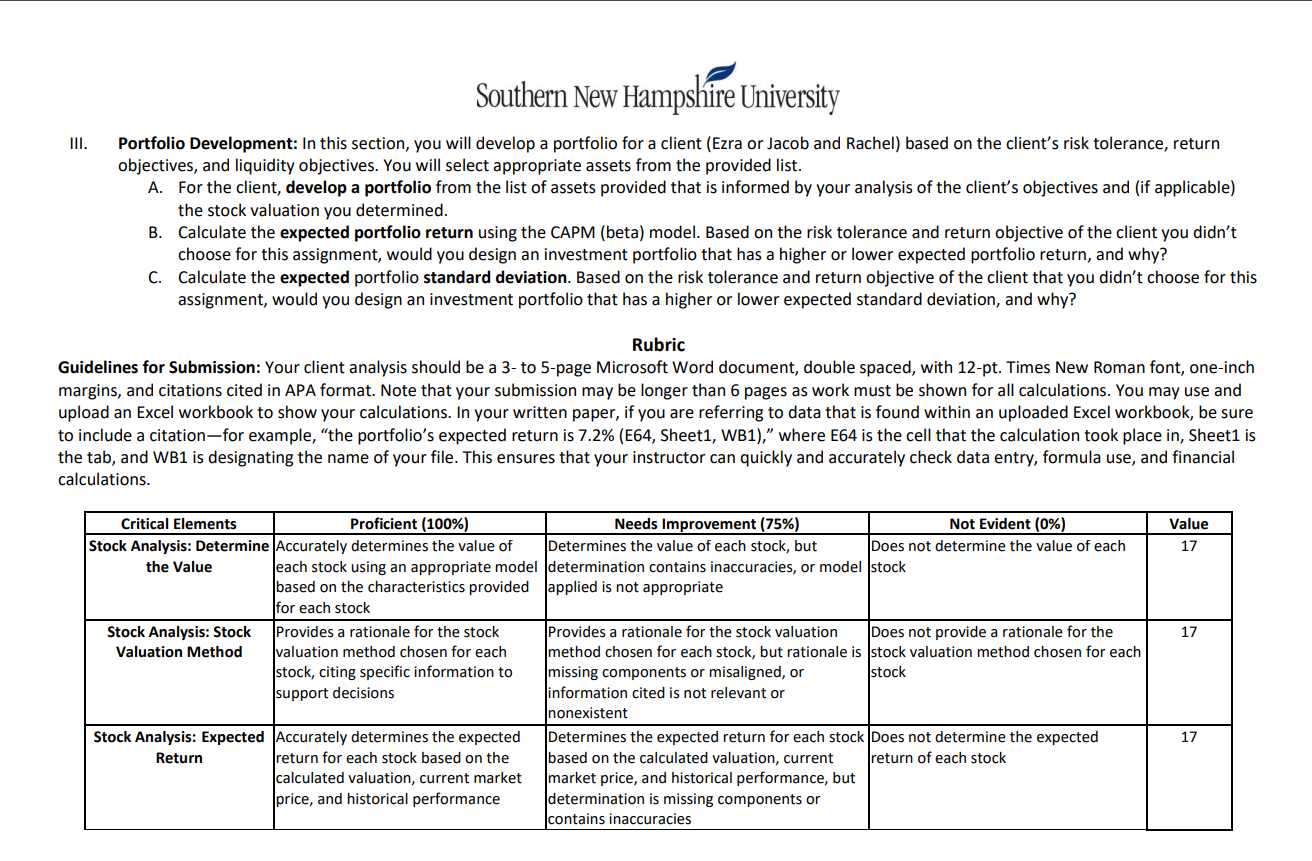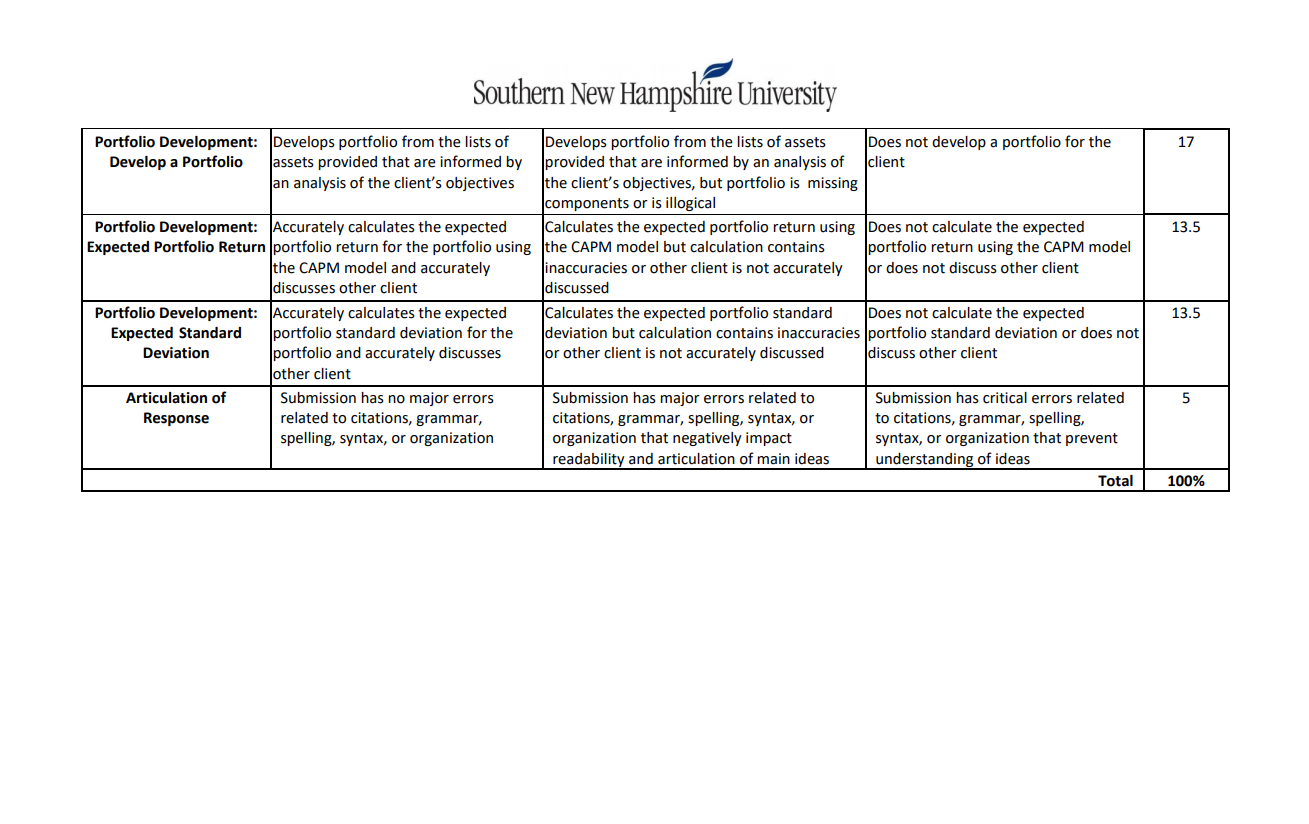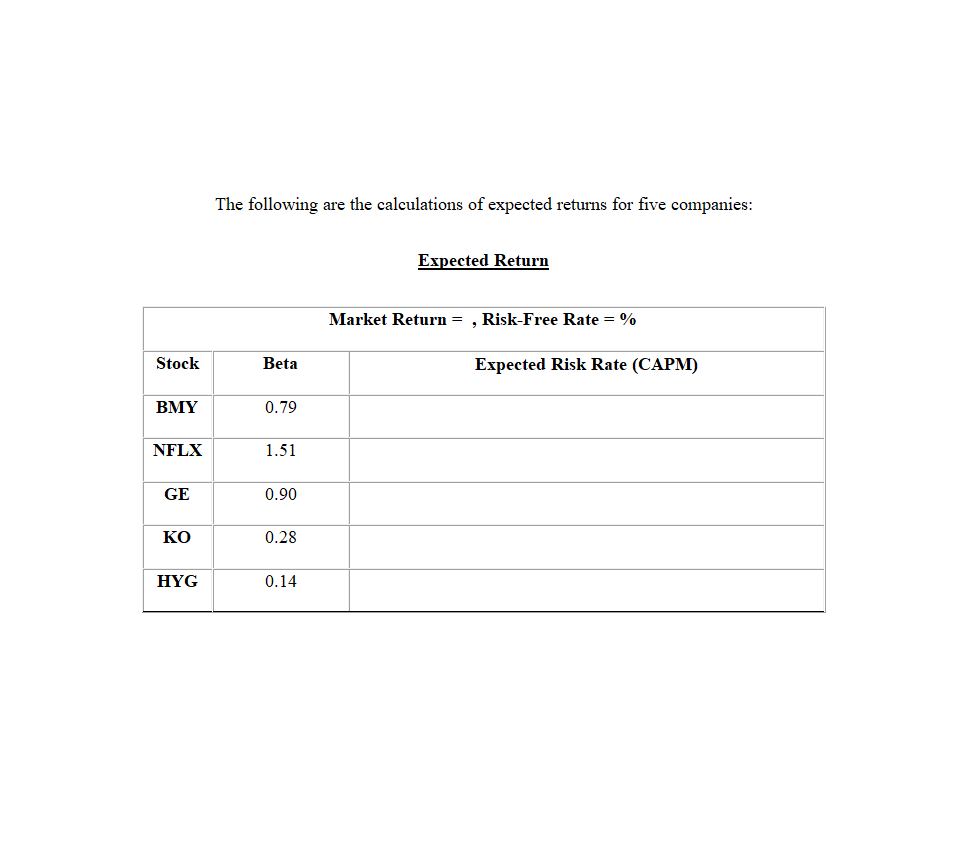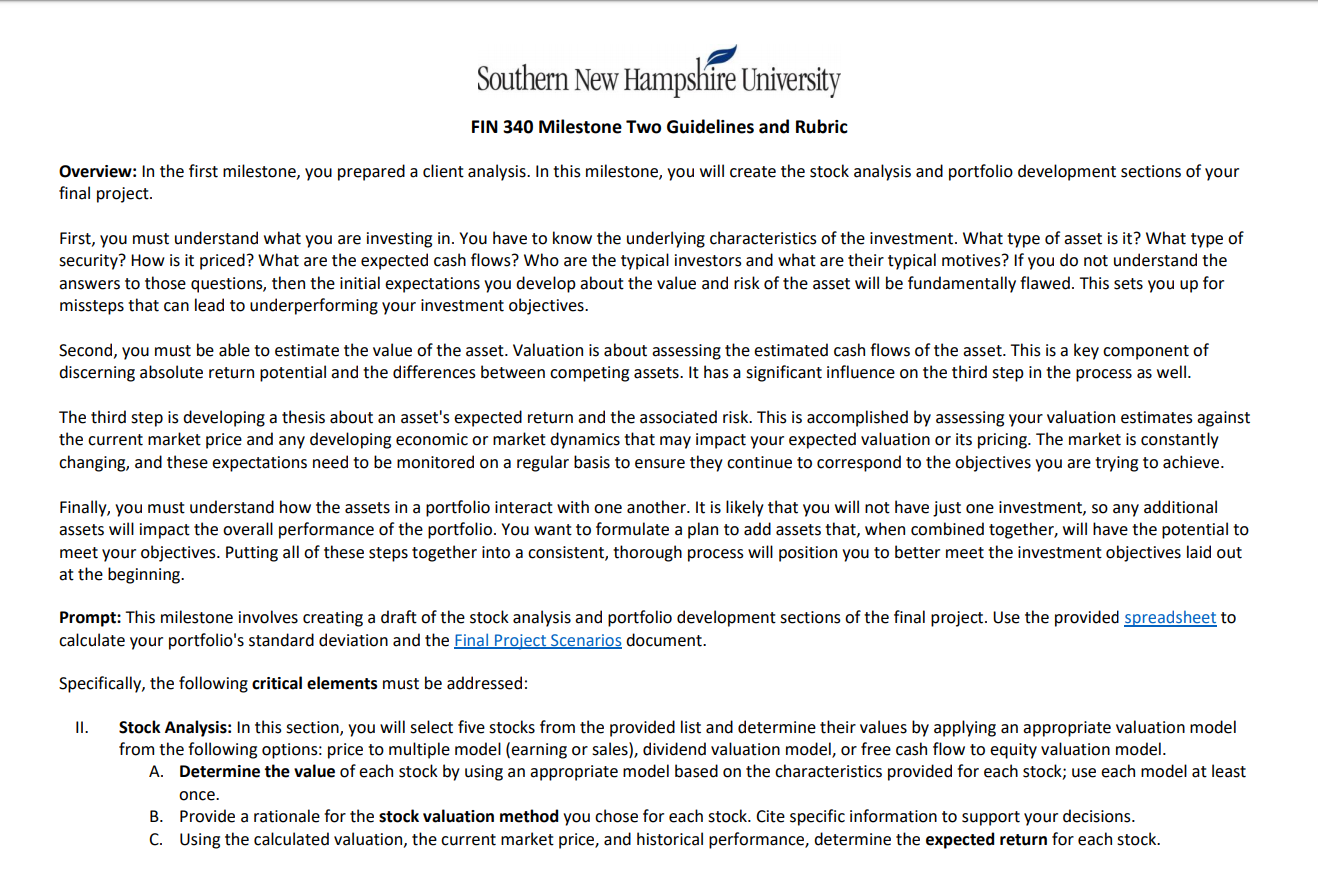
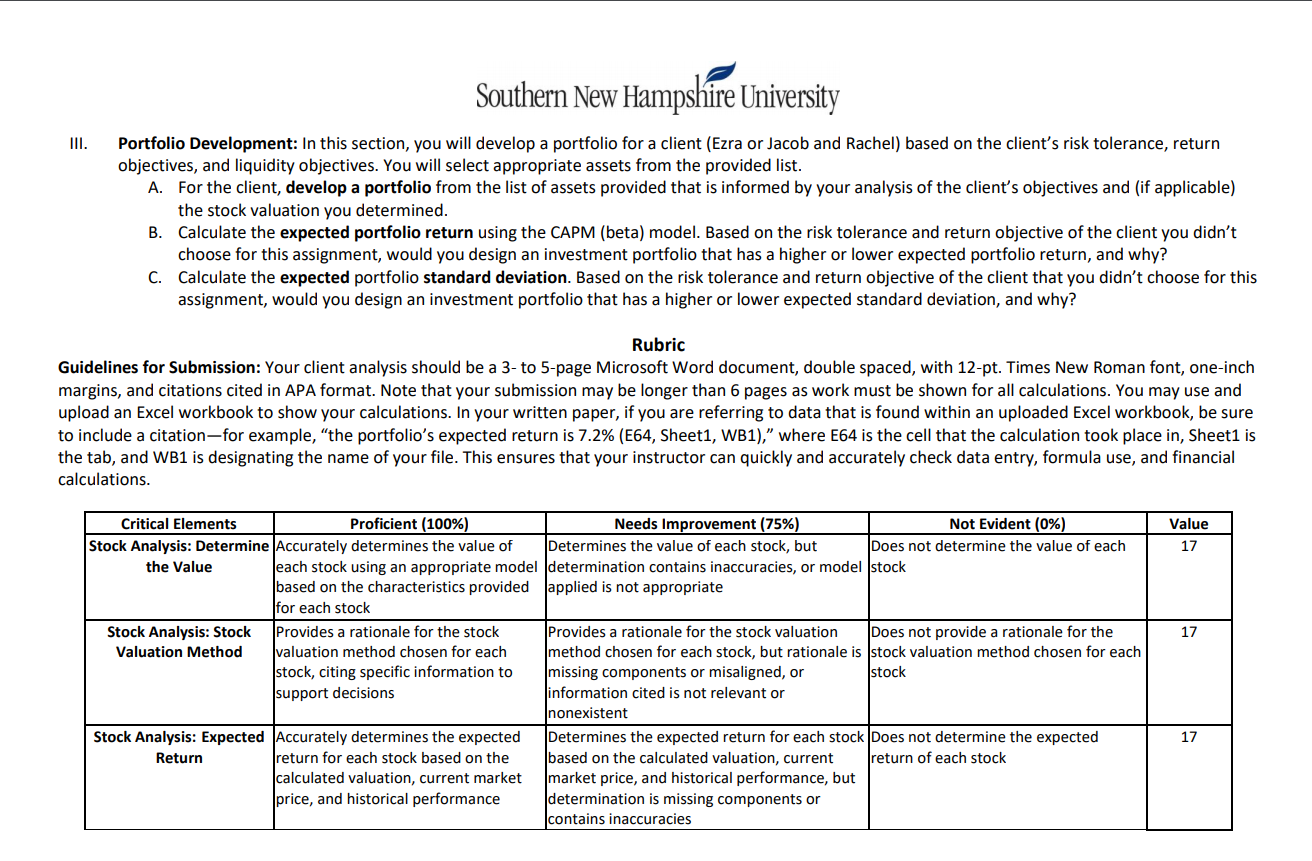
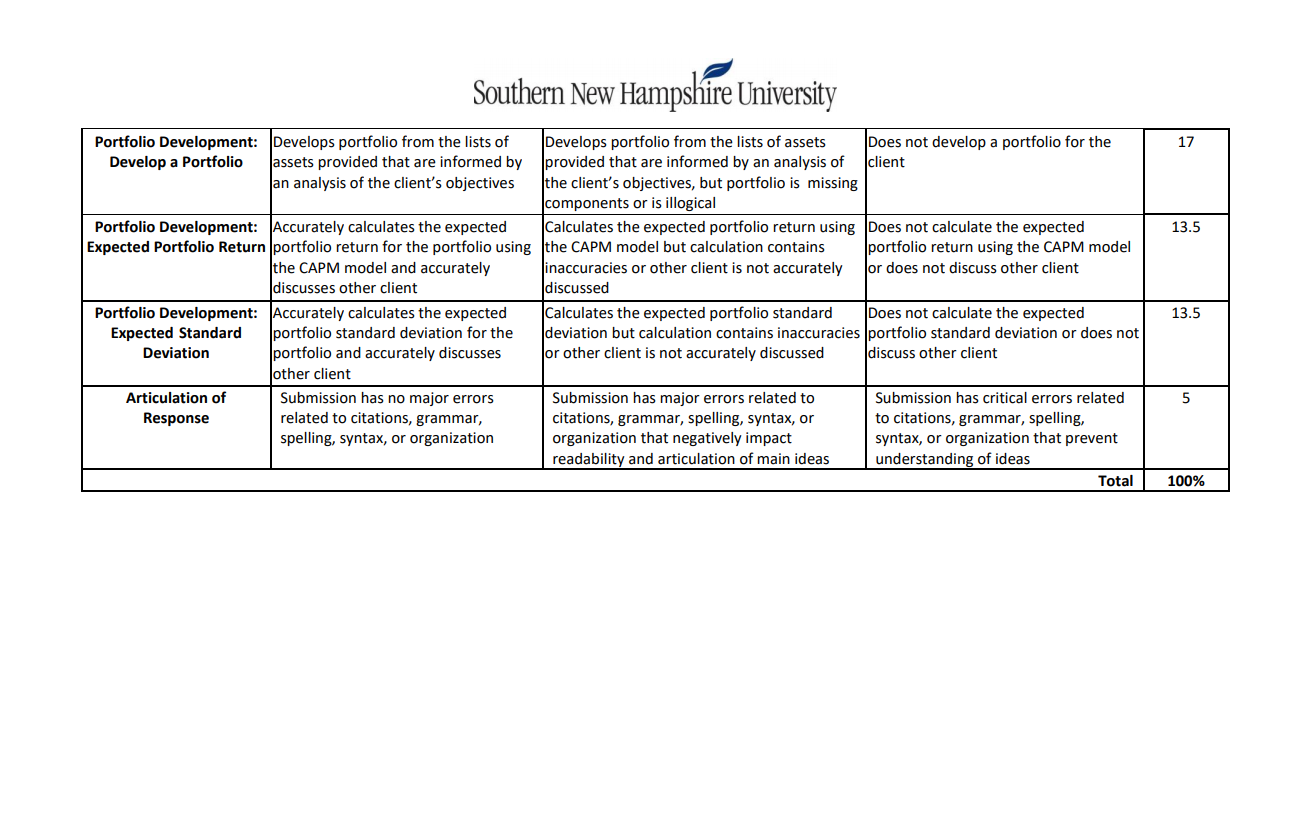
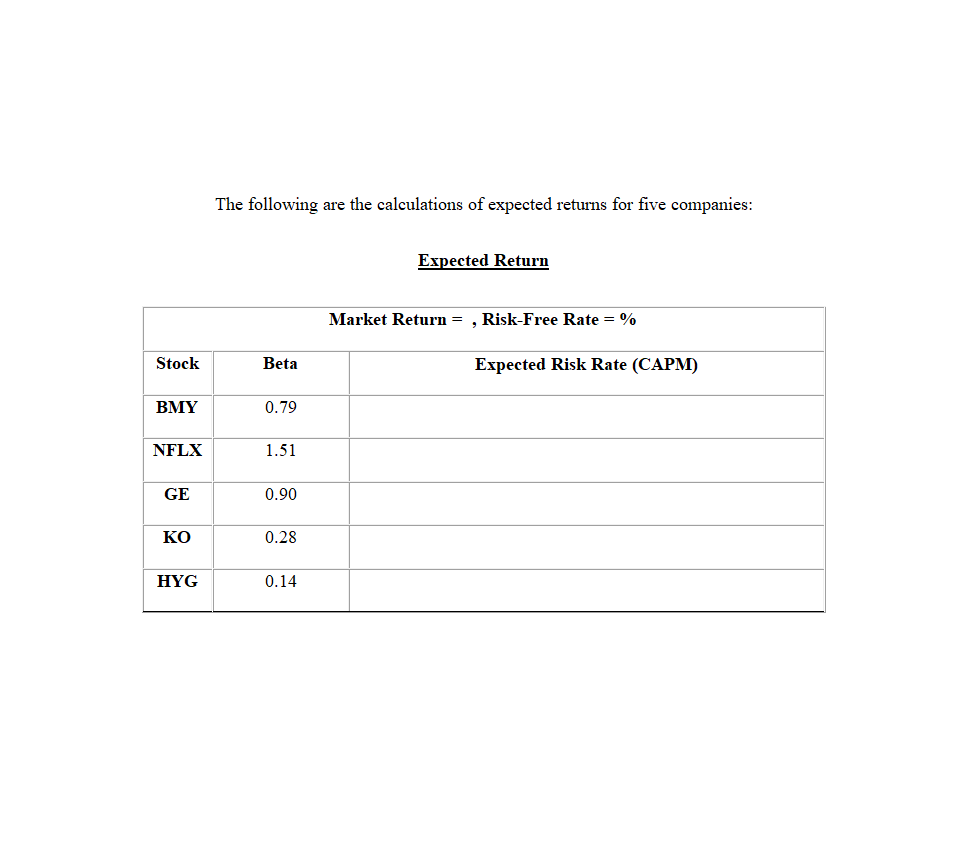
This is for help with a milestone assignment. I am having trouble with some of the calculations so nothing else is making sense.
I have attached the rubric for reference.I also included a screenshot of the five stocks that I chose.
Southern New Hampshiffev Umversity FIN 340 Milestone Two Guidelines and Rubric Overview: In the first milestone, you prepared a client analysis. In this milestone, you will create the stock analysis and portfolio development sections of your nal project. First, you must understand what you are investing in. You have to know the underlying characteristics of the investment. What type of asset is it? What type of security? How is it priced? What are the expected cash flows? Who are the typical investors and what are their typical motives? If you do not understand the answers to those questions, then the initial expectations you develop about the value and risk of the asset will be fundamentally flawed. This sets you up for missteps that can lead to underperforming your investment objectives. Second, you must be able to estimate the value of the asset. Valuation is about assessing the estimated cash flows of the asset. This is a key component of discerning absolute return potential and the differences between competing assets. It has a significant influence on the third step in the process as well. The third step is developing a thesis about an asset's expected return and the associated risk. This is accomplished by assessing your valuation estimates against the current market price and any developing economic or market dynamics that may impact your expected valuation or its pricing. The market is constantly changing, and these expectations need to be monitored on a regular basis to ensure they continue to correspond to the objectives you are trying to achieve. Finally, you must understand how the assets in a portfolio interact with one another. It is likely that you will not have just one investment, so any additional assets will impact the overall performance of the portfolio. You want to formulate a plan to add assets that, when combined together, will have the potential to meet your objectives. Putting all of these steps together into a consistent, thorough process will position you to better meet the investment objectives laid out at the beginning. Prompt: This milestone involves creating a draft of the stock analysis and portfolio development sections of the nal project. Use the provided spreadsheet to calculate your portfolio's standard deviation and the Final Proiect Scenarios document. Specifically, the following critical elements m ust be addressed: II. Stock Analysis: In this section, you will select five stocks from the provided list and determine their values by applying an appropriate valuation model from the following options: price to multiple model {earning or sales), dividend valuation model, or free cash flow to equity valuation model. A. Determine the value of each stock by using an appropriate model based on the characteristics provided for each stock; use each model at least once. B. Provide a rationale for the shock valuation method you chose for each stock. Cite specific infom'Iation to support your decisions. C. Using the calculated valuation, the current market price, and historical performance, determine the expected return for each stock. Southern New Harnpslngev University I\". Portfolio Development: In this section, you will develop a portfolio for a client (Ezra or Jacob and Rachel) based on the client's risk tolerance, return objectives, and liquidity objectives. You will select appropriate assets from the provided list. A. For the client, develop a portfolio from the list of assets provided that is informed by your analysis of the client's objectives and [if applicable) the stock valuation you determined. B. Calculate the expected portfolio return using the CAPM (beta) model. Based on the risk tolerance and return objective ofthe client you didn't choose for this assignment, would you design an investment portfolio that has a higher or lower expected portfolio return, and why? C. Calculate the expected portfolio standard deviation. Based on the risk tolerance and return objective of the client that you didn't choose for this assignment, would you design an investment portfolio that has a higher or lower expected standard deviation, and why? Rubric Guidelines for Submission: Your client analysis should be a 37 to 5epage Microsoft Word document, double spaced, with 127pt. Times New Roman font, onerinch margins, and citations cited in APA format. Note that your submission may be longer than 6 pages as work must be shown for all calculations. You may use and upload an Excel workbook to show your calculations. In your written paper, if you are referring to data that is found within an uploaded Excel workbook, be sure to include a citationfor example. \"the portfolio's expected return is 7.2% [E64, Sheetl, WBl),\" where E64 is the cell that the calculation took place in, Sheetl is the tab, and W31 is designating the name of your le. This ensures that your instructor can quickly and accurately check data entry, formula use, and financial calculations. Procient (100%) Needs Improvement (75%) Not Evident {0%) Stock Analysis: Determine Accurately determines the value of Determines the value of each stock, but Does not determine the value of each the Value each stock using an appropriate model determination contains' Inaccuracies, or model stock based on the characteristics provided applied is not appropriate for each stock Stock Analysis: Stock Provides a rationale for the stock Provides a rationale for the stock valuation Does not provide a rationale for the Valuation Method valuation method chosen for each method chosen for each stock, but rationale is stock valuation method chosen for each stock, citing specic information to missing components or misaligned, or stock support decisions information cited is not relevant or nonexistent Stock Analysis: Expected Accurately determines the expected Determines the expected return for each stock Does not determine the expected Return return for each stock based on the based on the calculated valuation, current return of each stock calculated valuation, current market market price, and historical performance, but price, and historical performance determination is missing components or contains inaccuracies Southern New Harnpstrichr University Portfolio Development: Develops portfolio from the lists of Develops portfolio from the lists of assets Does not develop a portfolio for the Developa Portfolio assets provided that are informed by provided that are informed by an analysis of client an analysis of the client's objectives the client's obJectives, but portfolio is missing components or is illogical Portfolio Development: Accurately calculates the expected Calculates the expected portfolio return using Does not calculate the expected 13.5 Expected Portfolio Return portfolio return for the portfolio using the CAPM model but calculation contains portfolio return using the CAPM model the CAPM model and accurately inaccuracies or other client is not accurately or does not discuss other client discusses other client discussed Portfolio Development: Accurately calculates the expected Calculates the expected portfolio standard Does not calculate the expected Expected Standard portfolio standard deviation forthe deviation but calculation contains inaccuracies portfolio standard deviation or does not Deviation portfolio and accurately discusses or other client is not accurately discussed discuss other client other client Articulation of Submission has no maior errors Submission has major errors related to Submission has critical errors related Response related to citations, grammar, citations. grammar. spelling, syntax, or to citations, grammar, spelling, spelling, syntax, or organization organization that negatively impact syntax, or organization that prevent readability and articulation of main ideas understanding of ideas The following are the calculations of expected returns for five companies: Expected Return Market Return = , Risk-Free Rate = % Stock Beta Expected Risk Rate (CAPM) BMY 0.79 NFLX 1.51 GE 0.90 KO 0.28 HYG 0.14




